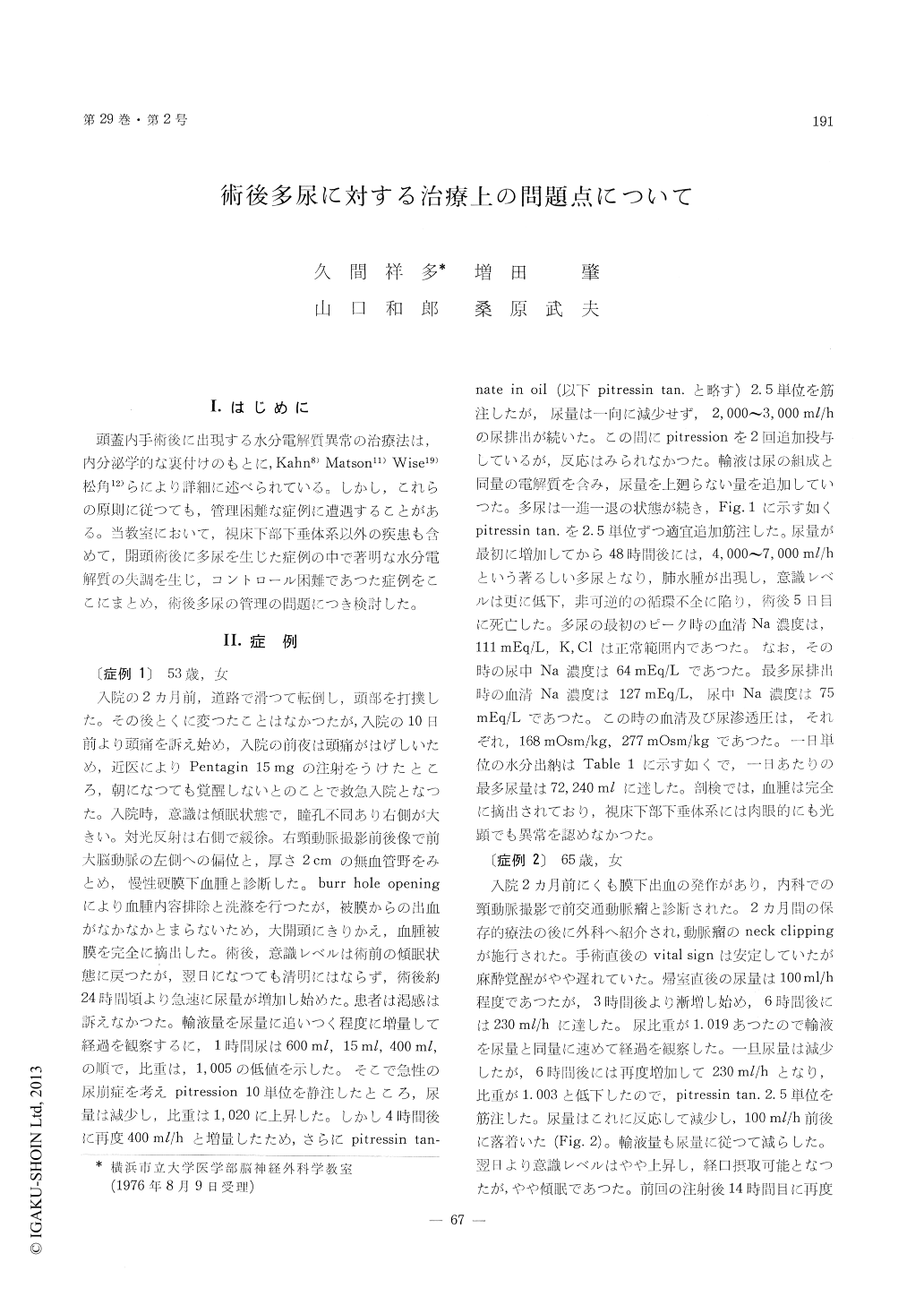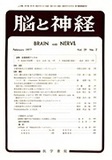Japanese
English
- 有料閲覧
- Abstract 文献概要
- 1ページ目 Look Inside
I.はじめに
頭蓋内手術後に出現する水分電解質異常の治療法は,内分泌学的な裏付けのもとに,Kahn8) Matson11) Wisei9) 松角12)らにより詳細に述べられている。しかし,これらの原則に従つても,管理困難な症例に遭遇することがある。当教室において,視床下部下垂体系以外の疾患も含めて,開頭術後に多尿を生じた症例の中で著明な水分電解質の失調を生じ,コントロール困難であつた症例をここにまとめ,術後多尿の管理の問題につき検討した。
Among the cases in which the postoperative pol-yuria developed during the past ten years in our department, some cases were difficult to be control-led, and resulted in severe water and electrolyte disturbance. Three such cases are presented here. They were the cases of chronic subdural hematoma, anterior communicating artery aneurysm and gli-oma in the chiasmal region. Each were adequately operated on. Twenty four hours, two hours and soon after operation polyuria appeared. Recoverly of consciousness was delayed in these three cases.I. V. fluid was added in the same amount as urinary outflow. When urinary output over two hundred mililiter per hour continued, and urine specific gravity dropped below 1. 005, pitressin or pitressin tannate in oil was given. Even after injection of pitressin, i. v. fluid was maintained in the way described above. As pitressin tannate in oil re-peated, their effect gradually decreased in the first two cases. At last, urinary outflow runned in extraordinally fast rate. Serum sodium concen-tration became quite low at this abnormal urination. Serum osmolarity was lower than that of urine. When polyuria continued for four and seven days, patients suffered pulmonary edema and died. In the third case, polyuria appeared soon after oper-ation. After two days' duration of polyuria, pitressin tannate in oil was given. Oliguria continued for five days. Serum sodium concentration decreased, while body weight increased in the oliguric period. On the fifth day, furosemide was given intra-venously, which triggered polyuria again. It con-tinued through the next day. But, as fluid intake was restricted, urinary output decreased to stable rate, and rerum sodium concentration returned to normal level.
Polyuria in the late stage of the first two cases seems to differ from diabetes insipidus, because they were not controlled by pitressin, and serum osmolarity was quite low. These phenomena simulate the pathophysiologic condition in the ex-periment reported in the literature. In the expe-riment, forced water intake was maintained in dogs receiving daily vasopressin. Three to five days after daily vasopressin was started, urine volume began to increase, often becoming greater than fluid intake. In this situation, the antidiuresis is said to escape from excessive ADH. Clinically, renal sodium loss and hyponatremia resuts from inappropriate secretion of antidiuretic hormone. By Bartter and Schwartz, management of SIADH can be directed towards the hyponatremia. As hypo-natremia result from excessive retention of water, they all respond to simple restriction of water.
From these experimental and clinical findings, it can be said that postoperative water and electro-lyte disturbance in our cases are caused by repeated pitressin administration and water load. In the early postoperative period, infusion of hypertonic solution to control the brain tension may lead transient polyuria. Sometimes diabetes insipidus may be transient. Therefore, administration of pitressin must be delayed as late as possible for the postoperative polyuria.

Copyright © 1977, Igaku-Shoin Ltd. All rights reserved.


